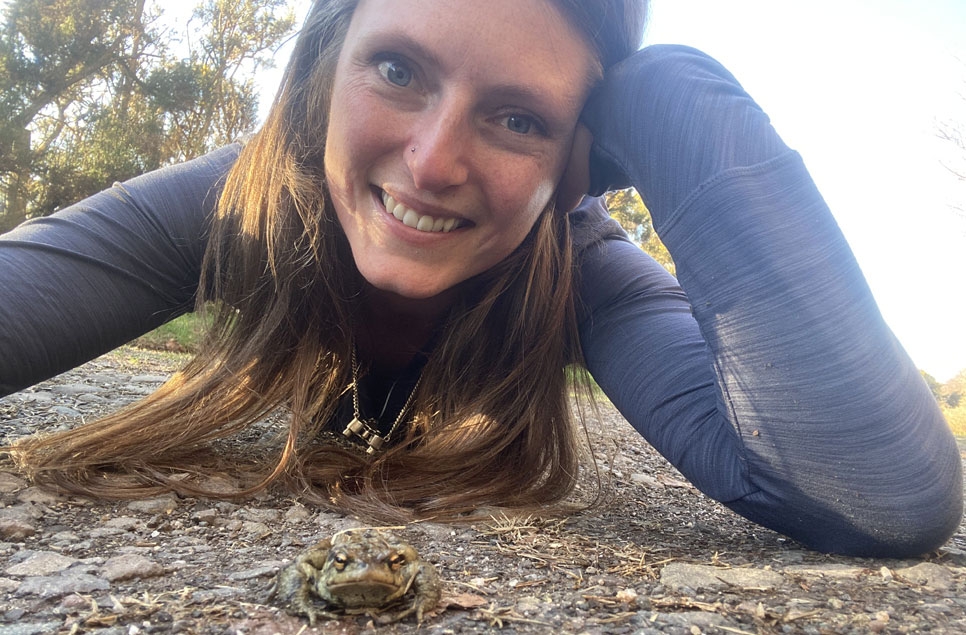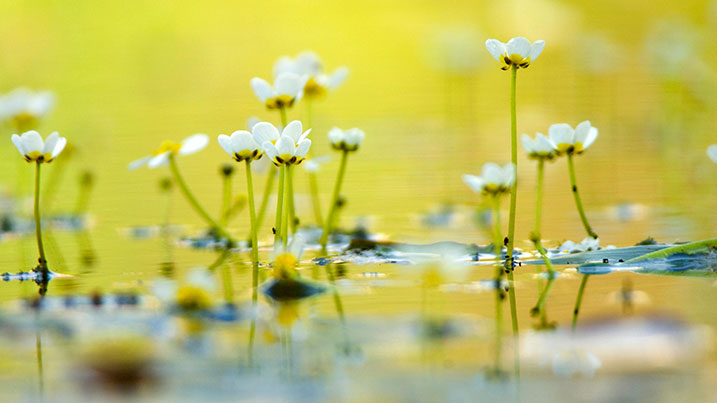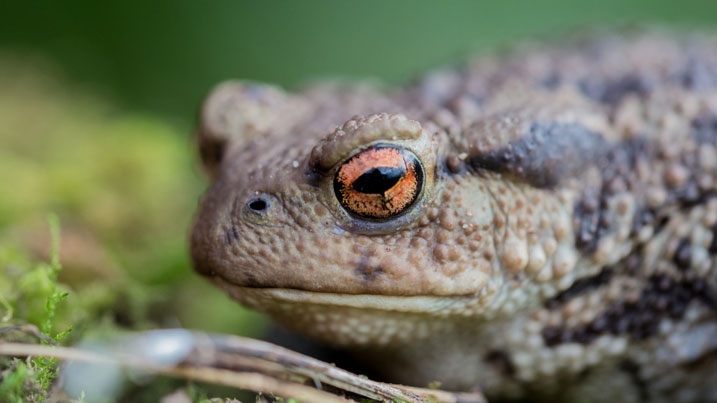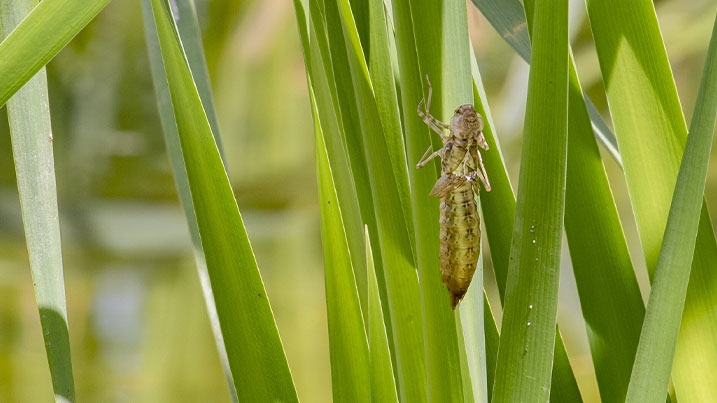Lucy Lapwing shares her love of mini-wetlands
Wetlands are the watery habitats such as ponds, rivers and marshes that are essential for wildlife. In fact, freshwater wetlands support more life per square kilometre than any other type of habitat. But the UK has suffered devastating wetland loss over hundreds of years. We’ve lost 75% of our wetlands in the last 300 years.

But, we have the power to make a difference by building mini-wetlands, like ponds, rain gardens and drainpipe wetlands, in our gardens, backyards and communities, as even the smallest wetlands can give a big boost to wildlife. In fact, mini-wetlands like ponds are often more nature-rich metre for metre than larger water bodies such as rivers and lakes (Wright et al., 1996; Biggs et al., 2005).
At the start of our Wetlands Can! Campaign for the creation of mini-wetlands everywhere, we caught up with WWT ambassador, Lucy Lapwing to learn more about her love of the smallest watery places in our landscape. In this blog, she describes the mini-wetland experiences both from her childhood and how they still inspire her to this day.

In praise of ponds and all their wildlife
Sadly we see fewer and fewer ponds in the places that we live and in the wider landscape, so when you do find them, it’s really noticeable what difference they make. Just a small patch of water has this magnetic power to draw in all kinds of wildlife. And whatever your favourite parts of nature, ponds tick all the boxes! And so, I’ll always take a nosey in a mini-wetland to see what I can find!
Here’s what you may discover...
Mammals and birds
If you're most interested in mammals; look out for footprints of many different species coming to a pond to drink, and bats hunting on the pond insects at night. If you’re a birder at heart, then ponds are where you can watch bird drink or even bathe, and find plenty of food around the water’s edge. Some even nest right by the water like Cetti's warblers, sedge warblers or reed warblers.
Invertebrates
If your passion is invertebrates, you’ll know that ponds are heaven for insect life. So many native insects live half their lives underwater as larvae before a dramatic second incarnation that sees them take to the air. And even some insects that are aquatic for their whole lifecycle, like great diving beetle, can still have hidden talents for flying and using that ability to colonise new ponds!
Amphibians
Amphibians are the most iconic of all pond wildlife – frogs and newts of course, and my personal favourite – toads! Toads might be easy to characterise as grumpy and ugly but that makes them all the more beautiful in my eyes. The way their lifecycle is inextricably tied in with water is amazing. And then our pond amphibians attract our native semi aquatic snake – the grass snake, who swims in water, hunting for frogs and toads to eat. What a brilliant bonus!

Plantlife
Finally, let’s not forgot amazing aquatic plants – including those with crazy carnivorous niches such as the bladderworts that trap and eat small invertebrates under the water. Plus butterworts and sundews, attracting flying insects via their flowering heads, then capture and digest them!
In fact, I I love to observe the different mix of aquatic plants in different types of small wetlands. Water crowfoot in clear flowing streams has a fairy-tale quality with ethereal streamers billowing under the surface and tiny little white flowers peaking above. And I always stop to admire sphagnum mosses in boggy places. I love their bright colours from lime green to wine-red and find their tiny intricate structures mesmerising.
On a recent walk, I found some bog beacon - which looks a bit like matches, with bright yellow/orange match head’s poking up out the moss. It’s one of my favourite fungi in the world, the colour is so bright and luminous. Those little fungal flames always catch my eye. There is just so much drama to observe at a pond. I recently watched a whole conglomerate of different species of dragonfly zipping around above the water. They were just about tolerating each other, but occasionally bickering and fighting on the wing.
I love the tangle of life that gets drawn to and sustained by a pond.
My childhood love of mini-wetlands
As a child, there were some ponds in a muddy cow field only about 50 metres from my garden that I was fascinated by. They held so much wildlife; there was always something to catch my attention, like whirly gig beetles and the water boatman. I’d come back time and again just to see what I could spot. The jackpot sighting was always a newt or a frog. I remember the thrill of discovering some of these local amphibians making home under rocks and in the bushes back in our garden.
I loved to wade into the pond in my wellies, inevitably tempted to stray just a bit too deep and getting a boot-full of pond water. I’d bring my favourite stick with me, that one really good stick that was my trusty companion on all my best adventures. I visited the ponds with my friends, or siblings, we’d use our sticks to poke into the mud. Often some sloppy pond weed flinging would ensue. We would get so filthy, but we didn’t care. As children we were unafraid of getting messy and dirty, and cold or wet; at the ponds we were always in our element.
Searching for exuvia
One of my favourite things to do in the summer, is to go down to the water’s edge of a pond and have a really good search around. I’m looking for the crispy empty skins of dragonfly or damselfly nymphs. Called exuvia, these are shed when the juvenile nymph form that has lived underwater, finally crawls up above the surface on vertical plant stems. Here they dry out and their old skin splits down the back, ready for the adult dragon or damselfly to emerge, spread its wings and fly!
You can identify the type of species by the skin it leaves behind by studying them really closely and paying attention to the smallest details, like the size of the spines on its tail.

Crazy Toads
I particularly enjoy going down to a pond in the late evening around late March and early April. At that time of year, when the sun goes down, you’ll find toads migrating back to the pools they were hatched in. When they reach the ponds, the males make this amazing noise. They’re all trying to out-do each other with the loudest call and it can become a real cacophony. With a little moonlight, you can see bubbling and rippling in the water as they wrestle for the females. It’s as if the pond itself has come alive, there is much energy, with the toads in a complete frenzy!
In our nature-depleted world, you don’t often get to experience such a sense of abundance. So for me, toad mating season is like wildlife Christmas. I love it!
Let’s get making mini-wetlands
I’d recommend creating a mini wetland to everyone – it’s a way of taking action for nature that will give you the greatest sense of reward. Freshwater wetlands support more life per square kilometre than any other type of habitat and with their loss, precious species like common frogs, swifts, and water shrews are all in trouble. But we do have the power to make a difference; even the smallest mini-wetlands can give a big boost to wildlife.
Plus there is a big personal payback. You get to see the direct results in your own outdoor space, and surprisingly quickly. When you use your own hands and your effort to make a little space for wildlife, it’s the biggest kick when you find frogs or newts or dragonflies have starting using it. Like they were just waiting for you to give them a foot-hold!
Mini-wetlands allow us to engage with a watery world that is so different to our own and so intriguing. Even with a tiny space, you can make a big difference when you just add water. And there’s nothing more rewarding than creating space for nature to flourish – it’s magical!
Create a mini-wetland


